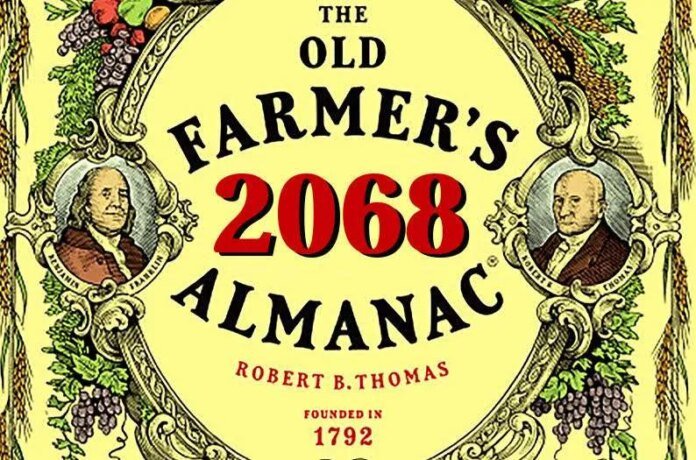Unless we change something, by 2050 we will be losing so much food to the impacts of climate change, that we will need to double crop yields from current quantities. Closing this gap will require ‘future-proofing’ our crops, by using a suite of breeding technologies to build them armor against drought, flooding, and elevated levels of CO2.
For years, scientists have been beavering away at this challenge, and there is now a large and expanding body of work showing real progress towards this goal. The new review study explores some of these solutions—and suggests that the challenge may not be developing the innovation, so much as it is securing the investment that’s urgently needed to bring it to life.
The study is penned by Stephen Long, professor at the University of Illinois at Urbana-Champaign and director of the long-term Realizing Increased Photosynthetic Efficiency (RIPE) project. His paper surveys five core climate challenges for crops: rising CO2, increased ozone pollution, rising heat, flooding, and drought.
Increasing CO2 levels, for instance, could be a boon for yields but it can also lead to lower-quality yields, reduced protein levels, and can make it hard for roots to develop properly. Already, scientists have identified possible solutions, showing that by upregulating certain proteins in soybeans for instance, they can influence processes that negatively affect photosynthesis, reduce metabolism, and decrease yields under high CO2 levels, thereby helping plants return to a state of normal production.
Another less-discussed challenge to agriculture is the impact of ozone, a chemical compound that’s formed in the atmosphere when heat and light interact with volatile organic compounds like nitrogen oxides and methane. In plants, the pollutant enters stomata, from where it disrupts photosynthesis and therefore yields. Between 1980 and 2011, studies show that crops lost to the effects of ozone in the United States cost $9 billion annually.
One solution under development is to select for plants with smaller stomata for breeding: these tighter stomata would limit the gas exchanges taking place between the plants and the atmosphere—known as their ‘stomatal conductance, and protect them from excess ozone damage. Meanwhile, this wouldn’t affect photosynthesis, the thinking goes, because rising CO2 levels means that stomata can still assimilate the gas at the same rate even with a reduced aperture.
Heat will also heap pressure on food systems, increasing crop failures by affecting photosynthesis and increasing respiration and water loss in plants. That’s expected to reduce yields of wheat, rice, and soybeans by 9%, 16% and 5% respectively—with effects that will grow significantly worse when combined with drought. Yet in one line of research, scientists are looking into heat shock proteins, which are triggered by high temperatures to buffer photosynthesis proteins and enable the process to continue. Upregulating these proteins in plants may increase their resilience against heat, the review suggests.
Research on reducing stomatal conductance could also double up to make plants more water-efficient by reducing their respiration rates: studies testing this approach have managed to reduce water use in the plant by 30%. Other field trials have shown that suppressing the role of certain plant enzymes can increase plants’ adaptability to stress and thereby increase drought tolerance by 26%.
From a lack of water to an excess: climate change also increases the regional risk of flooding, which aside from sweeping crops away can also starve roots of oxygen and cause them to rot.
But even here, researchers have made great progress, having identified a specific gene in flood-resilient rice plants that allows them to survive submergence for up to two weeks. When they then bred this gene into more sensitive cultivars, it was able to protect those crops against floods.
In a real-world success story, these flood-resistant varieties are now widespread on farms in India, “aiding poor farmers in the most flood-prone areas, who rapidly adopted the flood-tolerant lines,” the paper says.
The review looked not only at protecting plants with genomic tools but also at how they could become tools themselves to tackle climate change. One area of focus that’s shown striking success is engineering crops to develop larger and deeper root systems that remain in the soil below the tilling point, where their captured carbon is then locked away.
Another major area of research that has brought significant progress is the expansion of perennial crops that yield multiple harvests and don’t need to be replanted each year, therefore keeping soil carbon stable and locking more into the earth as well. It’s estimated that expanding these crops even just to marginal lands would remove 600 millions tonnes of atmospheric CO2 and lock it into the ground each year, the paper says.
All of this progress has been the result of plant breeding, and plenty more innovation will be needed to adapt crops to climate change. But in Long’s view, the real hurdle is the investment needed to propel more innovation and get existing solutions into the field.
Take maize as an example, says Long, where huge investment in the US crop by multinational companies propelled major improvements that led to the doubling of maize yields between 1980 and 2024. But ironically, most maize now is used for ethanol production rather than growing food in the US.
By contrast, at this crucial time for innovation, public investment in plant breeding is tapering off for staple food crops like sorghum, cassava, and rice, says Long. While we’re heading down the right track with promising developments like the flood-resistant rice, now funding is needed to keep them afloat, and help us adapt to a changing world.
“These examples show the success that can be achieved when molecular biology, breeding and seed distribution systems work together for a common cause,” says Long. “While there is still time, these needs deserve our most urgent attention.”
S. Long. “Needs and opportunities to future-proof crops and the use of crop systems tomitigate atmospheric change.” Philosophical Transactions B. 2025.
Image: ©Anthropocene






